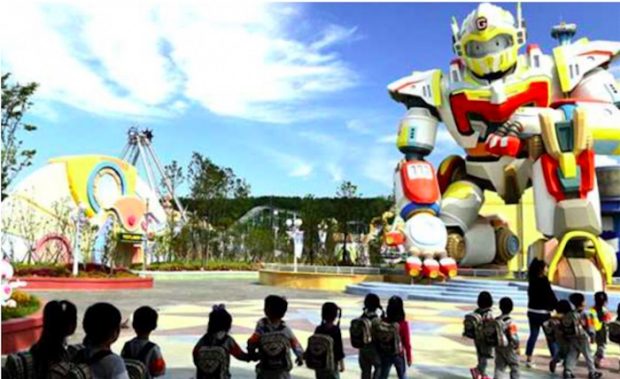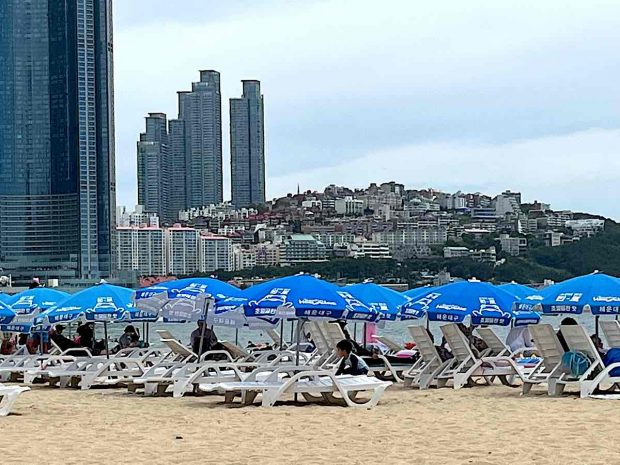
South Korea: Beacon of hope for Asia in times of climate change, global warming

By Dr. Hassan Humeida
KIEL, GERMANY: South Korea holds a prominent position among the developed countries with a total population of 51.8 million. This is despite the obstacles and difficulties faced by neighboring countries.
The total area of the Korean Peninsula is estimated at approximately 100,329 square kilometers, with a population density of 530.7 people per square kilometer.
In South Korea there are 10.7 million people who practice Buddhism, 8.6 million Protestant Christians and 5.1 million Catholic Christians. According to 2021 statistics, the average GDP per capita in South Korea is estimated at around $34,801.
The currency of South Korea is the South Korean Won and its slightly fluctuating exchange rate is approximately 1,387.39 Korean Won for $1.
The rate of newborns in Korea is around 8.4 per 1,000 residents each year. In terms of demographics and in a world comparison, the South Koreans are considered to be long-living people. The average life expectancy in South Korea is around 82 years per person, 80 years for men and 86 years for women. The mortality rate is about 5.9 deaths per 1000 people per year.
On the other hand, the fertility rate is around 0.88 children per woman, the lowest ever since 1950. This makes South Korea one of the industrialized countries with the lowest birth rates, according to the latest reports and statistics for 2021/2022.
South Korea, which gained independence on August 15, 1945, is an example of how a country can face obstacles and difficulties in its own way. This is reflected in accuracy, order, diligence, perseverance at work and improving production.

This made South Korea a major industrial country, exporting high-quality products to all the world, including the industrially advanced countries.
What has made South Korea a country not to be underestimated industrially, economically and culturally is its perseverance in the production and innovation of its products compared to its Japanese counterpart in recent technological breakthroughs. It is clear to the visitor to South Korea that there is no area of production in which the industrialized country has not made successful progress.
This is despite the small area of the country and its very cold and long winter season.
This situation urges the world to exchange ideas with the modern South Korea in various fields, especially since the South Korean people, renowned around the world for their hard work, success, diligence and the good quality of their products in many fields.
Particularly noteworthy here are South Korea’s efforts to produce with clean energies because the country has limited land and natural resources and protected nature.
The South Korea’s products are widely used because of the user’s preference over others and their reasonable price.
South Korea’s products with well-known international brands include electronic, electrical and mechanical appliances, transportation, medicines, cosmetics, food and clothing.
South Korea is made up of about 17 provinces or territories, and each province has a capital city governed by a mayor who is elected in a four-year government cycle.
According to their population density, the major industrial cities of South Korea include the capital Seoul with about 9.7 million inhabitants, Busan with about 3.5 million inhabitants, Incheon with about 2.8 million inhabitants, Gwangju with about 1.5 million inhabitants, and Suwan with about 1.3 million people (data from 2021).

Global, high-quality and engineering design companies in Korea include Hyundai companies, which manufacture automobiles, transportation, and heavy machinery, and Samsung companies, which manufacture electronic and electrical equipment. The two companies play an active role in promoting the South Korean economy.
Thanks to the economic boom that South Korea has achieved in recent years and the role played by the two companies mentioned, the percentage of unemployed has fallen, and this has reduced the poverty figures among Koreans and consequently the crime rate.
South Korea’s progress in all fields comes from the diligence of its people, who have won an economic victory, crowned South Korea and made it a country at the forefront of progress, urbanization and modernity.
The people obviously stand behind a country that loves to be freed from economic constraints and accumulated debt, turning it from a country in debt until three decades ago to a country rich in produce and quality and a worldwide exporter of modern technological technologies.
Anyone living in South Korea today or traveling through its great cities of high architectural and technological sophistication will notice the modern boom it has achieved.
It houses modern buildings that are solidly built to keep up with the demands of Korean citizens and of the modern world at a time when natural disasters such as earthquakes and floods are threatening many countries in Southeast Asia.
Natural disasters are knocking on the world’s doors, with an alarming global population explosion by 2050. The alarm is mostly felt on the Asian continent, particularly in the countries of Southeast Asia.
Yet, the modern and energy-adapted high-rise buildings that soar in South Korean cities are equipped with everything human beings need, from water, electricity, heating and in-house transportation.
What is striking in South Korea is the super cleanliness of airports, train stations, subways and public roads.
South Korea not only has an economic face, but also a beautiful, natural and beautiful façade. Given the natural beauty of South Korea, the government and people strive to preserve the country’s unique nature.
Among the distinguishing features of the South Korean people from the rest of the world is that they see the beauty of nature not in a narrow framework, such as a small home garden, but in a broader space, embracing it in the nature of their e land, in its seas and rivers, in its valleys and forests, in its soil, water and food.
Korea is currently paying full attention to the existence of alternative energy sources, such as providing electricity that Korean citizens do not need at home and in the office.
The South Korean state is gradually converting to green energy, relying on used water treatment technologies and recycling of factory waste to generate and provide the necessary energy.
It is also by seriously looking for ways to reduce smoke from factories and public and private vehicles, and focusing on the development of modern industries that depend on alternative and renewable energy, such as B. Solar energy technology, water treatment and others.
For this reason, South Korea plays a role in the international community as a country with a long history of modern development.
There is an urgent need to stimulate the economies of countries still in deep sleep or other countries waiting to benefit from the experience of advanced countries like the modern Republic of South Korea.
South Korea plays a key role in Asia on the topic of “climate change with global warming”, along with other countries in Asia such as Singapore, Malaysia, Japan, India and China.
As a beacon of hope like Singapore, South Korea can contribute a lot positively to the consequences of climate change and global warming through high technologies that it has developed itself. Cities like Seoul, Busan and Suwon can make such a project technically possible.
However, it requires a good and functioning partnership between South Korea and countries in the rest of the world so that this important country can make a good contribution as a partner to the rest of the world.
After the Corona crisis, the South Korean economy suffered from the long lockdowns, as did many industrialized countries around the world. Some countries even collapsed their systems and many important products could not be transported or marketed.
South Korea has survived this time unscathed andit is currently facing new challenges, namely to preserve the old trading partners and to win new, loyal trading partners.
However, this can only be achieved through an intact and functioning partnership. It is possible for these countries to get a clear and transparent picture of South Korea as an industrial country.
This is possible if they visit the country, see its products, get an idea of it and support each other as loyal trading partners through international production fairs.
Email: hassan_humeida@yahoo.de


